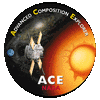

ACE/CRIS's high precision cosmic ray isotopic and elemental abundance
measurements now allow us to test quantitatively cosmic ray source
injection and transport models, such as the FIP versus volatility
injection biases, the interstellar versus supernova dust grains, and
decay versus nondecay of K-capture radionuclei, that can all provide
important new constraints on the origin of cosmic rays. However, the
standard leaky box model or other general Galactic models cannot provide
the level of precision now required for analysing the ACE/CRIS measurements.
We now need to investigate the local cosmic ray transport, spallation
and reacceleration in the context of the local (~ kpc) interstellar
medium and the local, relatively recent (<30 Myr) distribution of
supernova sources. Thus, we propose to construct the local spacetime
dependent distribution of supernovae as a source of shock energy,
as well as potential particles, together with a model of the local space
and time dependent inhomogeneous interstellar medium, using a wide variety
of recent astronomical observations and theory. We will incorporate these
distributions into a time dependent, three-dimensional Monte Carlo
propagation program to determine the local cosmic ray path length
distributions as functions of cosmic ray particle mass and energy, that
are essential to understanding the cosmic ray local composition. This
we will use in conjunction with nuclear spallation and reacceleration
calculations to carry out analyses of isotopic and elemental measurements
from ACE/CRIS in order to test propagation models and distinguish between
between cosmic ray source injection models. We will also make these
distributions available to others interested in making independent
propagation calculations.
Our Email Address: asc@srl.caltech.edu